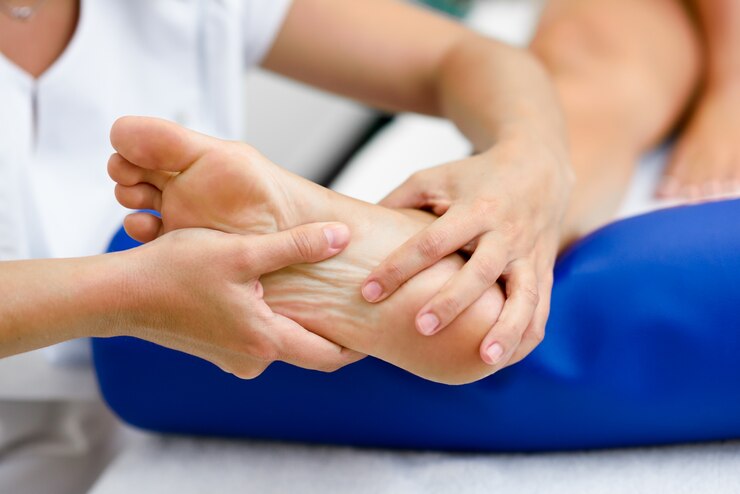Introduction
Foot health has emerged as a significant topic of discussion in health and wellness. While it might sound unfamiliar to many, ESFeet encapsulates a range of conditions and symptoms related to foot health. This article aims to thoroughly understand this condition, its causes, symptoms, treatment options, and preventive measures. By the end of this guide, you’ll have a clearer picture of managing and preventing foot soreness, ensuring your feet remain healthy and pain-free.
What is ESFeet?
At its core, ESFeet refers to a condition characterized by highly sore feet. This soreness can manifest in various ways, including pain, stiffness, swelling, and redness. The term highlights the severity of the discomfort experienced by individuals suffering from this condition.
Causes of ESFeet
Several factors can contribute to the development of foot soreness. Understanding these causes is crucial for effective prevention and treatment. Here are some common causes:
- Overuse and Strain: Prolonged standing, walking, or running can put excessive strain on the feet, leading to soreness and discomfort.
- Improper Footwear: Wearing shoes that do not provide adequate support or are ill-fitting can exacerbate foot problems.
- Medical Conditions: Conditions such as arthritis, diabetes, and plantar fasciitis can contribute to the development of sore feet.
- Injury: Trauma or injury to the feet, such as sprains or fractures, can result in prolonged soreness.
- Obesity: Excess body weight can put additional pressure on the feet, leading to pain and discomfort.
Symptoms of ESFeet
The symptoms of foot soreness can vary depending on the underlying cause and severity of the condition. Common symptoms include:
- Pain: Persistent pain in the feet, especially after prolonged activity.
- Swelling: Noticeable swelling in the feet, often accompanied by redness.
- Stiffness: Difficulty in moving the feet or toes due to stiffness.
- Tenderness: Sensitivity to touch makes wearing shoes or walking uncomfortable.
- Thickened Skin: Development of calluses or thickened skin in certain foot areas.
Diagnosis of ESFeet
Diagnosing foot soreness typically involves a thorough examination by a healthcare professional. This may include:
- Medical History: Discuss your symptoms, lifestyle, and underlying medical conditions.
- Physical Examination: A detailed examination of the feet to identify signs of swelling, redness, or deformities.
- Imaging Tests: X-rays, MRIs, or ultrasounds may be used to assess the condition of the bones, joints, and soft tissues in the feet.
- Blood Tests: In some cases, blood tests may be conducted to rule out underlying medical conditions such as arthritis or diabetes.
Treatment Options for ESFeet
The treatment of foot soreness depends on the underlying cause and severity of the condition. Here are some standard treatment options:
- Rest and Elevation: Giving your feet adequate rest and elevating them can help reduce swelling and pain.
- Ice Therapy: Applying ice packs to the affected areas can help alleviate pain and reduce inflammation.
- Footwear Modifications: Switching to supportive and comfortable footwear can significantly improve foot health.
- Physical Therapy: Engaging in specific exercises and stretches can help strengthen the muscles and improve flexibility in the feet.
- Medications: Over-the-counter and anti-inflammatory pain relievers can temporarily relieve pain and swelling.
- Orthotic Devices: Custom-made orthotic inserts can provide additional support and alleviate foot pressure.
- Surgery: In severe cases, surgical intervention may be necessary to correct underlying structural issues.
Preventive Measures for ESFeet
Preventing foot soreness involves adopting healthy habits and lifestyle changes to reduce the risk of developing foot problems. Here are some preventive measures:
- Wear Proper Footwear: Invest in shoes that provide adequate support and cushioning for your feet.
- Maintain a Healthy Weight: Keeping your weight in check can reduce the pressure on your feet.
- Stay Active: Regular exercise can help strengthen the muscles in your feet and improve overall foot health.
- Practice Good Foot Hygiene: Keep your feet clean and dry to prevent infections and other foot problems.
- Stretch and Warm-Up: Before engaging in physical activities, stretch and warm up your feet to avoid injuries.
- Listen to Your Body: Pay attention to any signs of discomfort or pain in your feet and take appropriate action.
Living with ESFeet
Living with foot soreness can be challenging, but you can manage the condition effectively with the right approach. Here are some tips for coping with foot soreness:
- Stay Informed: Educate yourself about foot health and stay updated on the latest treatment options and preventive measures.
- Seek Support: Join support groups or online communities where you can share your experiences and learn from others.
- Communicate with Your Healthcare Provider: Regularly consult with your healthcare provider to monitor your condition and adjust your treatment plan as needed.
- Adopt a Positive Mindset: Maintaining a positive attitude can help you cope with the challenges of foot soreness.
Conclusion
Foot soreness can significantly impact your quality of life, but it is manageable with the proper knowledge and approach. By understanding the causes, symptoms, and treatment options, you can take proactive steps to prevent and alleviate the discomfort associated with foot soreness. Remember to prioritize foot health, seek professional advice, and make lifestyle changes that promote overall well-being. Your feet are the foundation of your mobility, and caring for them is essential for a healthy and active life.
